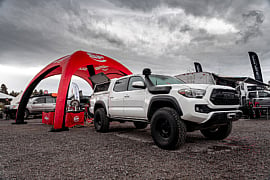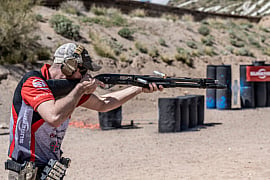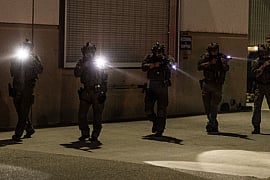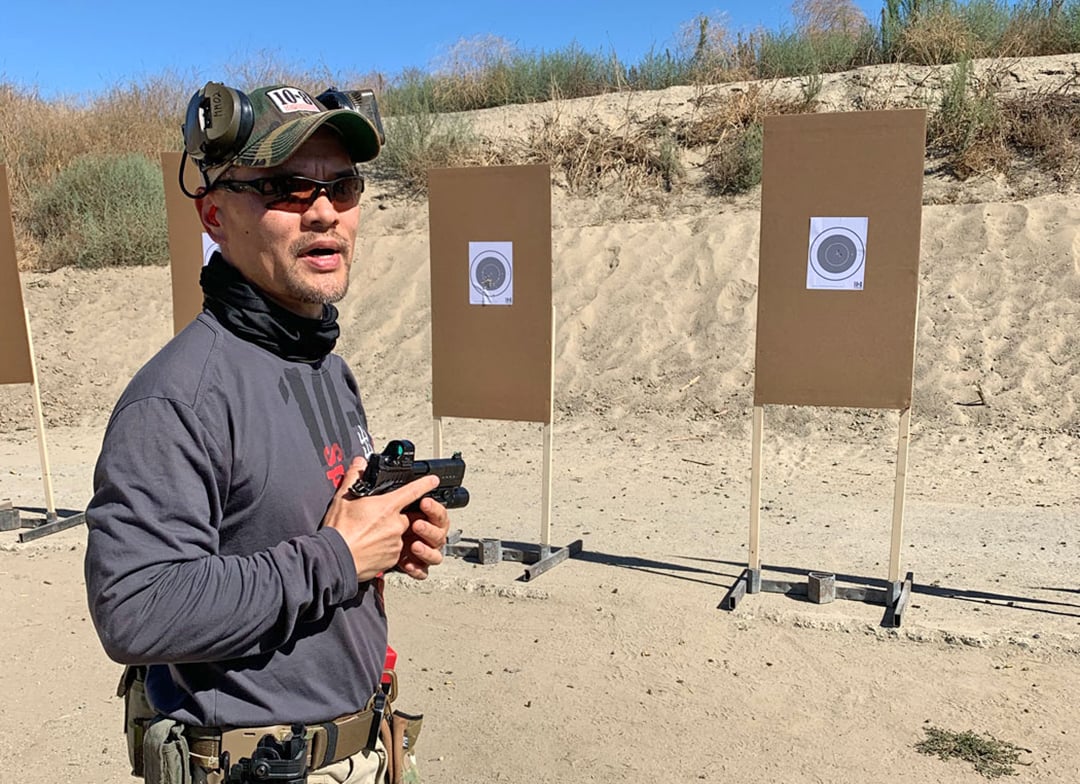
There’s no denying that red dot optics on handguns are becoming more mainstream in the shooting world.
A few years ago, red dots were considered high-end accessories best suited for military or competition use or “crutches” for older or less competent shooters struggling to acquire targets with iron sights. Fast forward to today, where the red dot’s proven record of increasing accuracy and shooting speed has practically made it a must-have accessory. The trend has prompted many gun manufacturers to transition from optics-ready pistols to full-package handgun models that include the red dot as standard equipment.
Naturally, there is also a need for competent training in the use of a red dot optic. Hilton Yam of 10-8 Performance provides such a course. A retired FBI Special Agent, Yam is the founder of 10-8 Performance, specializing in premium components and sights for the 1911 and other handguns. 10-8 also provides a multitude of training opportunities for shooters seeking to improve their skills. During a career of over 21 years in the Miami Field Office, one the FBI’s largest and busiest, Yam was assigned to bank robbery, fugitives, and firearms training. He spent 19 years on SWAT and served as his team’s principal instructor for firearms, CQB, and tactics. He is also an FBI certified Firearms Instructor, Defensive Tactics Instructor, Senior Tactical Instructor, Rappel Master, and ALERRT Active Shooter Response Instructor.
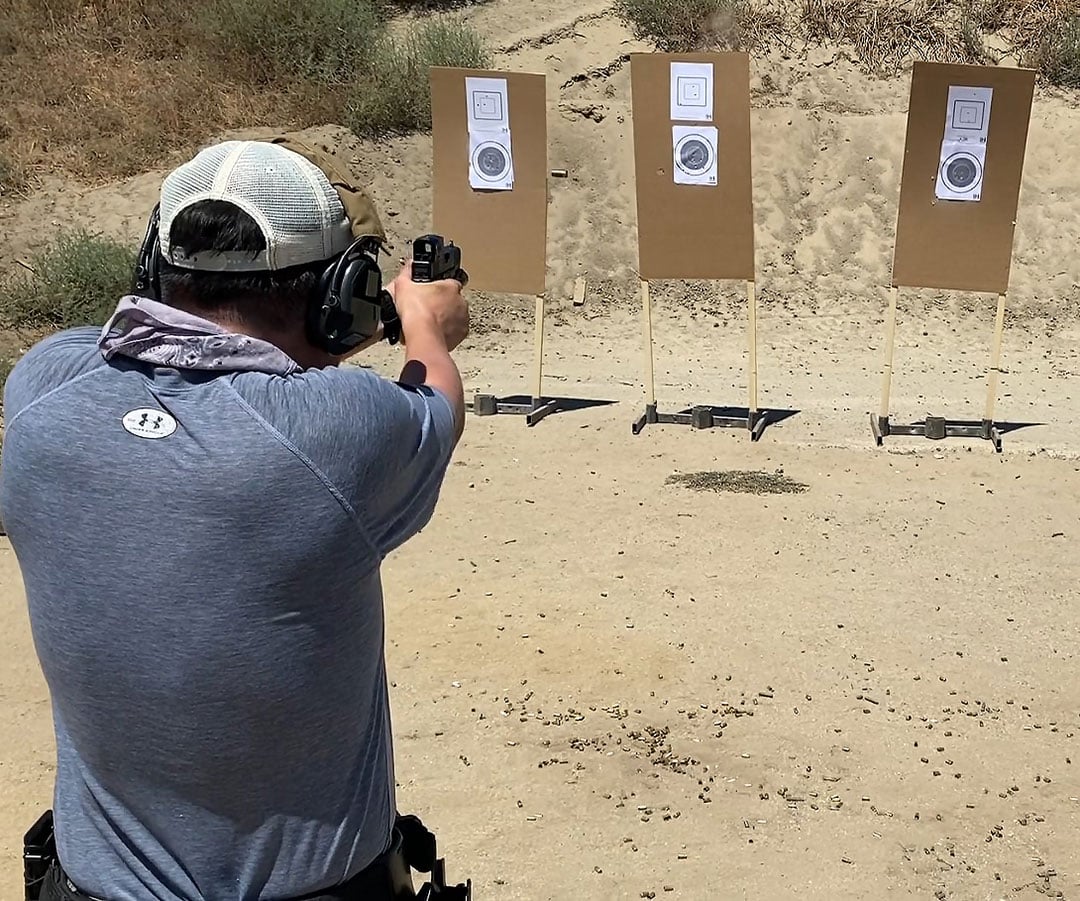
SureFire Product Manager Steven Schwier recently accepted a special invitation to attend Yam’s two-day Law Enforcement Pistol Optics course. Besides Schwier, 17 other students, all from various Southern California LE agencies, took part. Most of them used their duty weapons, which included Staccato Ps, Smith & Wesson M&Ps, and Glock 17s fitted with Trijicon or Leupold Delta optics. Schwier opted to use a Glock 45 equipped with an Aimpoint Acro and a SureFire X300 Ultra WeaponLight.
Yam’s objective was not merely to teach the nuances of red dot optic use but to provide the students with the necessary experience to return to their respective agencies and augment existing red dot qualification courses or create new ones.
“It was a bit more varsity than I thought it was going to be,” Schwier said. “Hilton evaluated all of us and told us we were going to kick it up a notch. Next thing I knew, we went straight into Bill Drills.”
The L Presentation
Yam teaches that red dot optic competence is predicated upon acquiring the dot quickly and consistently in the high-ready position. The reality is that many new red dot pistol shooters have difficulty finding the red dot the moment they get into the high-ready position. When transitioning from iron sights to red dot sights, many shooters will have to move or wiggle the pistol to acquire the dot when they get to high ready. Yam’s L Presentation drills are intended to eliminate this lag.
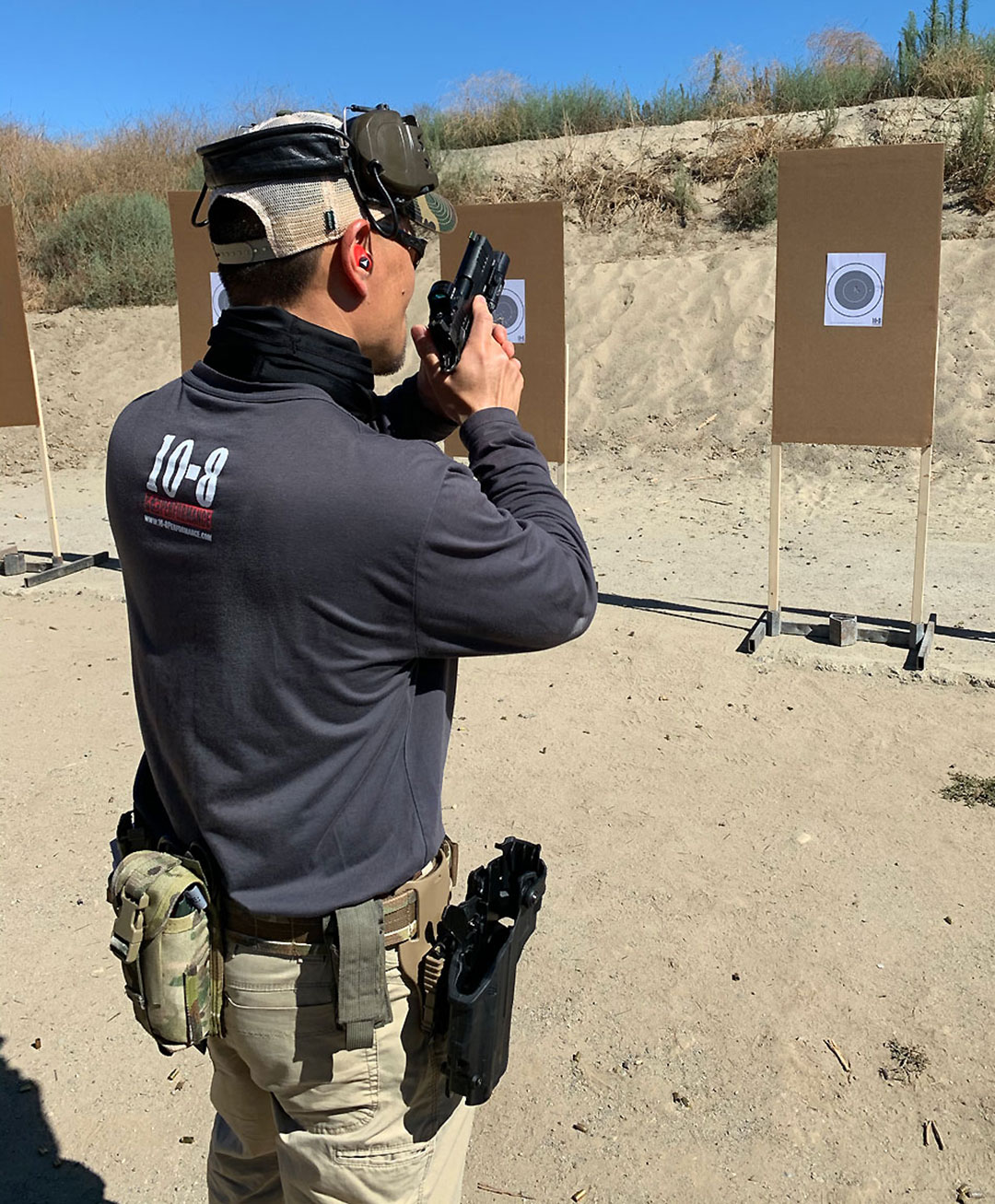
To complete the L Presentation, the shooter draws and uses a two-handed grip to move the handgun to the high compressed ready position at the chin level rather than at the sternum. He then extends the gun straight out to extension. From the chin area to extension is the time and distance the shooter has to acquire the red dot.
“We practiced the L Presentation with dry fire practice first,” Schwier said. “That helped it to feel less robotic for me. It really helps you pick up the red dot sooner.”
Students spent Day 1 working on the L Presentation and shooting Bill Drills to become familiar with the L Presentation technique. Day 2 included more Bill Drills at varying distances, side-by-side target shooting, and three-wide target shooting.
Optic Failure Drills
Among the many useful drills Yam teaches, several of them show students what to do if their red dot optics fails in the middle of a conflict. They are, after all, vulnerable to damage that could occur if one were to drop the pistol or strike the optic against a stationary object such as a wall, railing, or pole.
“What are you going to do?” Schwier said. “In the heat of a dynamic situation where your life is at stake, you’re not going to have the time to check your equipment. You’re probably going to keep firing until the threat in front of you is neutralized.”
Many red dot optic users co-witness their iron sights with the optic. But what happens if the window is so damaged that it is difficult to see the front sight? The 10-8 Performance course includes several drills to help students deal with the problem.
“We took some masking tape and partially covered the front [muzzle side] of the red dot. Schwier said. “When you shoot a red dot, you shoot with both eyes open, so you can still transpose the dot over the target and fire very accurate shots. Then we fully covered the front. You can’t see through the window, but you can still see the dot. We did partial- and full-coverage front and full-coverage rear so that you couldn’t see the dot, but you could still take very precise shots even when the window is fully occluded. In my opinion, these drills were really worth it. There may be instances where you’re rolling around in dirt or something, and if you have an open emitter, dirt and other debris can get packed in there, and you may still have to take a life-saving shot.”
Various other drills also included shooting while kneeling, laying down urban prone, and laying on one’s back, and shooting between the legs.
“Shooting while standing with a resting heart rate is easy,” Schwier said. “Most people can do it. But getting your heart rate while shooting on the move is more difficult especially with a red dot on your pistol because the red dot will bounce as you step. We practiced this by shooting at varying distances — 25, 15, 10 yards — while having to make accurate shots.”
Overall, Schwier felt that his two days at the 10-8 Performance course were time well spent.
 “It was a great course,” he said. “For me, the L Presentation really helped, and now I use it when I do my occasional and not sufficient enough dry fire practice at home. It isn’t that hard to shoot with a red dot, but quality training with an experienced instructor can really help speed up the learning curve. There are lots of benefits and some disadvantages to red dots, but in my opinion, the benefits outweigh the disadvantages. They’re here to stay.”
“It was a great course,” he said. “For me, the L Presentation really helped, and now I use it when I do my occasional and not sufficient enough dry fire practice at home. It isn’t that hard to shoot with a red dot, but quality training with an experienced instructor can really help speed up the learning curve. There are lots of benefits and some disadvantages to red dots, but in my opinion, the benefits outweigh the disadvantages. They’re here to stay.”
For more information on 10-8 Performance, visit 10-8performance.com.

